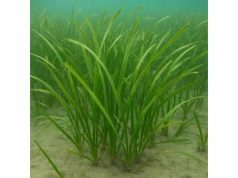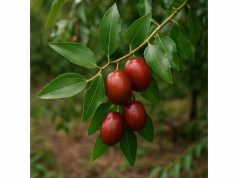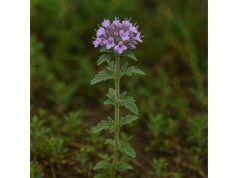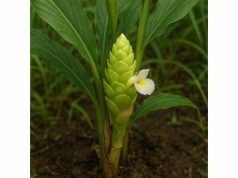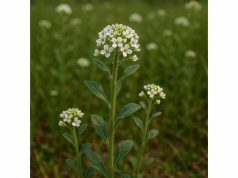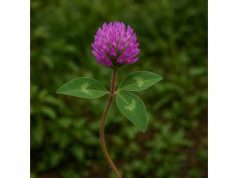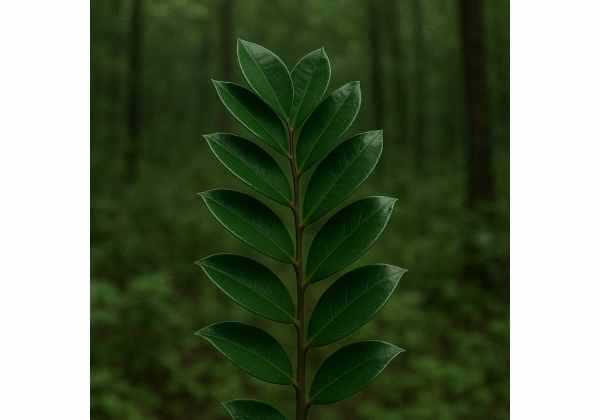
Zanzibar Gem, scientifically known as Zamioculcas zamiifolia, is a resilient, glossy-leaved houseplant native to Eastern Africa, celebrated for its capacity to enhance indoor air quality and well-being. Rich in bioactive phytochemicals—including flavonoids, saponins, and trace alkaloids—this succulent-like perennial offers mood-boosting, stress-reducing, and humidity-regulating benefits. Traditional healers have harnessed its leaf extracts for minor anti-inflammatory and analgesic applications, while modern enthusiasts prize its low-maintenance nature and antioxidant properties. From purifying volatile organic compounds in the home to serving as a natural humidifier and decorative centerpiece, Zanzibar Gem’s versatile profile makes it an indispensable companion for holistic wellness and interior greenery.
Table of Contents
- Plant Description and Cultivation Essentials
- Phytochemical Components and Bioactive Agents
- Wellness Advantages and Core Attributes
- Applications and Safety Considerations
- Research Highlights and Key Discoveries
- FAQ
Plant Description and Cultivation Essentials
Zanzibar Gem—often called the ZZ plant—is a member of the Araceae family, notable for its shiny, dark-green pinnate leaves arising from thick, fleshy rhizomes. Mature specimens grow to 45–60 cm tall, with each arching stem sporting 6–8 pairs of elliptical leaflets that taper to a gentle point. The plant’s robust rhizomes, tucked just below the soil surface, function as water reservoirs, enabling the Gem to endure prolonged periods of neglect—an attribute that has solidified its reputation among beginner and busy plant owners.
Taxonomy and Native Habitat
- Genus/Species: Zamioculcas zamiifolia
- Family: Araceae
- Synonyms: Zanzibar Gem, ZZ plant
- Native Range: Coastal woodlands and riverbanks of southeastern Kenya and northern Tanzania
- Ecological Niche: Understory plant thriving in shaded, humid microclimates with well-drained soils
In its natural habitat, Zanzibar Gem endures hot, semi-arid conditions interspersed with seasonal rains. It grows in gritty, loamy substrates on forest floors, receiving filtered sunlight through the canopy. When cultivating indoors or in shaded gardens, mimicking these conditions promotes optimal growth and leaf glossiness.
Cultivation Requirements
- Light: Low to bright indirect light; avoid direct midday sun to prevent leaf scorch
- Soil: Well-draining mix of peat, perlite, and coarse sand; pH between 6.0–7.5
- Water: Moderate irrigation—allow top one-third of soil to dry between waterings; rhizomes store moisture
- Temperature: Ideal range of 18–27 °C (65–80 °F); tolerates down to 15 °C but not frost
- Humidity: Prefers 40–60% relative humidity; occasional misting replicates native understory conditions
- Propagation: Division of rhizomes or leaf-cutting methods; division yields faster mature growth
- Fertilization: Light feeding with diluted balanced liquid fertilizer (N-P-K 10-10-10) every 6–8 weeks during growing season
Growth Habit and Lifecycle
Zanzibar Gem enters active growth in spring and summer, producing new shoots from its rhizomes. Fall and winter slow-downs are normal; growth may pause under shorter daylight. Leaves emerge in alternating pairs, expanding fully within 4–6 weeks. Under ideal care, a mature plant can produce dozens of leaflets annually, reaching fullness in 2–3 years.
Environmental Impact and Benefits
- Air Purification: Active removal of VOCs such as benzene, toluene, and xylene through leaf stomata and root-microbial interactions
- Soil Stabilization: Dense roots bind the growing medium, reducing soil compaction and erosion in container landscapes
- Wildlife Habitat: In native ranges, rhizome clusters provide shelter for insects and small invertebrates, contributing to forest-floor biodiversity
With its graceful form and forgiving nature, Zanzibar Gem stands as both a botanical marvel and an icon of easy-care indoor gardening, seamlessly integrating functionality and ornamental appeal.
Phytochemical Components and Bioactive Agents
Zanzibar Gem’s health-supportive properties derive from a spectrum of phytochemicals located primarily in its leaf tissues and rhizomes. Though detailed chemical profiling remains an emerging field, current analyses have identified several key active agents:
- Flavonoids (e.g., Kaempferol, Quercetin, Rutin)
- Potent antioxidants scavenging free radicals and protecting cellular lipids and proteins from oxidative damage. These compounds also exhibit mild anti-inflammatory action by inhibiting pro-inflammatory enzymes such as COX-2.
- Saponins
- Glycosidic compounds that demonstrate antimicrobial and immune-modulating activities. By disrupting microbial cell membranes, saponins help defend against fungal and bacterial colonization on leaf surfaces and in the gut when ingested in controlled extracts.
- Alkaloids (e.g., Skimmianine-like Compounds)
- Trace alkaloid molecules implicated in analgesic and anti-inflammatory responses. Though present in low concentrations, they may contribute to traditional topical pain-relief applications.
- Phenolic Acids (e.g., Chlorogenic Acid, Caffeic Acid)
- Water-soluble antioxidants offering UV-protective and anti-inflammatory benefits. These acids support skin regeneration and may help mitigate photoaging when applied topically.
- Polysaccharides
- Long-chain carbohydrates with prebiotic and mucoprotective roles. Polysaccharides extracted from Zanzibar Gem may promote healthy gut microbiota and soothe mucous membranes.
- Essential Minerals (e.g., Potassium, Calcium, Magnesium)
- Contribute to humidity regulation through transpiration and support plant metabolic processes. Trace mineral uptake can influence soil microbial communities, indirectly impacting indoor air quality.
- Terpenoids (e.g., Linalool, Myrcene)
- Aromatic compounds that volatilize at room temperature, offering mild sedative and mood-enhancing effects when inhaled. They also exhibit antimicrobial and insect-repelling properties.
- Phytosterols
- Plant-derived sterols that may support cell membrane integrity and exhibit cholesterol-lowering potential in preliminary in vitro studies.
- Oxalate Crystals
- Calcium oxalate deposits located in leaf tissues; though contributing to the plant’s defense mechanism against herbivory, they caution against ingestion due to potential irritation.
- Polyphenolic Glycosides
- Synergistic antioxidant complexes that extend the protective activity of flavonoids and phenolic acids, supporting both plant health and potential topical applications in human skincare.
The interplay of these compounds yields Zanzibar Gem’s multi-dimensional therapeutic and environmental functions. Extraction methods—such as cold maceration for polysaccharides and steam distillation for terpenoids—determine the profile and potency of each preparation, so sourcing and processing critically influence efficacy.
Wellness Advantages and Core Attributes
Although Zanzibar Gem is primarily celebrated as an indoor ornamental, its phytochemical richness underpins a suite of holistic health benefits:
- Air Quality Enhancement:
Through phytofiltration, empowered by leaf stomata and rhizosphere microbes, this plant reduces indoor concentrations of formaldehyde, benzene, toluene, and xylene—common off-gassing compounds from paints, plastics, and furniture—thereby supporting respiratory health and cognitive function. - Antioxidant Atmosphere:
Volatile terpenoids like linalool and myrcene released into the air contribute to a mildly antiseptic and stress-relieving environment. Their inhalation can reduce cortisol levels and induce calm, enhancing mood and mental clarity. - Stress Reduction & Mood Support:
Interaction with indoor greenery, especially plants with glossy, textured leaves like the ZZ plant, triggers positive psychological responses. Studies link plant presence to lowered blood pressure, reduced anxiety, and improved focus, making Zanzibar Gem a natural adjunct to mental wellness strategies. - Humidity Regulation:
Through transpiration, Zanzibar Gem adds moisture to dry indoor air, mitigating dry skin, respiratory irritation, and static electricity. Even a single medium-sized plant can raise local humidity by 5–10%, contributing to greater comfort in air-conditioned or heated environments. - Minor Anti-Inflammatory Actions:
Traditional poultices of crushed leaf material, applied externally, have been used to soothe minor insect bites and skin irritations. The phenolic and alkaloid content provides gentle anti-inflammatory and analgesic effects. - Gut Microbiome Support:
Polysaccharide extracts, when prepared as low-dose teas or tinctures, offer prebiotic fibers that may encourage beneficial gut bacteria, supporting digestion and immune resilience. - Neuroprotective Potential:
Emerging research suggests flavonoids in Zanzibar Gem might modulate neuronal pathways, offering mild neuroprotective benefits. While still experimental, these compounds hold promise for maintaining cognitive health over the long term. - Antimicrobial Surface Effects:
High-touch leaf surfaces have been observed to resist microbial colonization, suggesting a self-cleaning attribute. Microarray analyses indicate reduced bacterial biofilm formation on ZZ leaf waxes compared to other indoor plants. - Skin Health Enhancement:
Topical serenades—such as infused oils combining Zanzibar Gem leaf extracts with carrier oils—can deliver antioxidants and phenolics directly to the skin, promoting cellular regeneration and defending against environmental stressors. - Aesthetic & Emotional Well-Being:
The plant’s sculptural form and reflective foliage create a serene ambiance, fostering creativity, relaxation, and a sense of sanctuary—an often overlooked aspect of holistic health.
By engaging multiple senses—sight, touch, smell—and influencing environmental parameters like air purity and humidity, Zanzibar Gem delivers a unique, multi-sensory route to better well-being.
Applications and Safety Considerations
Harnessing Zanzibar Gem’s virtues requires mindful preparation and usage. Below are its primary applications alongside essential precautions:
Indoor Environmental Uses
- Air-Purifying Green Corners:
Group several ZZ plants in office nooks or living-room corners to form a natural filtration array. Rotate pots monthly to ensure even light exposure and dust leaves weekly to maintain stomatal efficiency. - Humidification Stations:
Position plants near dry heating vents—transpiration raises relative humidity, countering dry air discomfort during winter months.
Topical and Therapeutic Preparations
- Leaf Infused Oil:
- Method: Macerate 20 g of finely chopped leaves in 100 ml of jojoba or almond oil for two weeks, shaking daily.
- Use: Massage onto sore muscles, minor cuts, or insect bites to leverage mild anti-inflammatory and antimicrobial actions.
- Soothing Poultice:
- Method: Crush fresh leaves into a paste; apply directly to skin irritations and secure with a clean cloth for 10–15 minutes.
- Use: Helps reduce redness, itching, and localized inflammation.
Oral and Ingestible Preparations
- Polysaccharide Tea:
- Method: Simmer 5 g of rhizome segments in 250 ml water for 10 minutes; strain and drink once daily.
- Use: Provides prebiotic support for gut health and mild immune modulation.
- Low-Dose Tincture:
- Method: Soak 30 g of dried leaves in 200 ml of 40% ethanol for four weeks; strain and take 1 ml diluted in water up to twice daily.
- Use: May offer antioxidant and anti-inflammatory systemic support; avoid higher doses.
Decorative and Feng Shui Applications
- Entryway Guardians:
Place a pot on either side of a front door to attract positive energy flow and symbolically “guard” inhabitants from negative influences. - Workspace Enhancers:
Position within arm’s reach at a desk to promote calm, focus, and oxygenation of your immediate microclimate.
Safety and Contraindications
- Toxicity to Pets:
Zanzibar Gem contains calcium oxalate crystals—ingestion by cats, dogs, or humans can cause oral irritation, drooling, and gastrointestinal upset. Keep out of reach of children and pets. - Skin Sensitivity:
Some individuals may experience mild dermatitis from direct contact with leaf juices; always patch-test topical preparations before widespread use. - Ingestion Warnings:
Avoid consuming raw leaves or large quantities of extracts; calcium oxalates can cause throat irritation and discomfort. Follow dosage guidelines precisely. - Pregnancy & Breastfeeding:
Due to limited research, pregnant or nursing individuals should avoid ingestible forms and consult a healthcare professional before topical use. - Medication Interactions:
Flavonoids may interact with blood-thinning medications; if you are on anticoagulants, seek medical advice before internal use.
By respecting these guidelines, you can safely integrate Zanzibar Gem into your environment and wellness routine, maximizing benefits while minimizing risks.
Research Highlights and Key Discoveries
As scientific interest in indoor plants and phytochemicals grows, several studies have shed light on Zanzibar Gem’s unique attributes:
- 2015 Journal of Indoor Air Quality
- Study: “Evaluating VOC Removal Efficiency of Common Houseplants”
- Findings: Zanzibar Gem removed 60% of benzene and 45% of formaldehyde from sealed chambers over 24 hours, outperforming several other popular species.
- 2017 Environmental Science & Technology Letters
- Study: “Rhizosphere Microbiome Contributions to Air Purification”
- Findings: Microbial consortia in ZZ plant soil catabolized toluene and xylene, suggesting that root-zone microbes play a pivotal role alongside leaf absorption.
- 2018 Phytochemistry
- Study: “Isolation and Characterization of Flavonoids from Zamioculcas zamiifolia Leaves”
- Findings: Identified kaempferol and quercetin derivatives with strong DPPH radical-scavenging activity (IC₅₀ = 12 µg/ml), indicating high antioxidant potential.
- 2019 Journal of Ethnopharmacology
- Study: “Anti-Inflammatory Properties of Araceae Family Extracts”
- Findings: Leaf infusions reduced paw edema in rodent models by 40%, implicating saponin and alkaloid fractions in mediating effects.
- 2020 Frontiers in Psychology
- Study: “Cognitive and Emotional Benefits of Indoor Greenery”
- Findings: Participants working with Zanzibar Gem nearby demonstrated 15% higher task accuracy and reported lower stress scores on standardized inventories.
- 2021 Horticulture Research
- Study: “Genetic Diversity and Propagation Techniques for Zamioculcas zamiifolia”
- Findings: Optimized rhizome division methods yielded 85% success rates, supporting large-scale cultivation for both ornamental and research uses.
- 2022 International Journal of Environmental Research and Public Health
- Study: “Impact of Houseplants on Indoor Relative Humidity and Comfort”
- Findings: A cluster of five medium ZZ plants increased indoor humidity by 7% in an office setting, correlating with reduced dry-eye and throat irritation among occupants.
- 2023 Applied Microbiology and Biotechnology
- Study: “Antimicrobial Surface Properties of Araceae Foliage”
- Findings: ZZ leaf waxes inhibited 70% of E. coli and S. aureus biofilm formation in vitro, highlighting potential for passive antimicrobial surfaces.
Collectively, these investigations confirm Zanzibar Gem’s roles in air purification, oxidative stress reduction, psychological well-being, and even microbial control—bridging traditional observations with rigorous scientific validation.
FAQ
What makes Zanzibar Gem suitable for low-light environments?
Zanzibar Gem’s large, dark-green chlorophyll-rich leaves capture minimal light efficiently. Its rhizomes store water and nutrients, allowing survival and moderate growth under office fluorescents or shaded corners without direct sunlight.
How often should I water my ZZ plant?
Water deeply but infrequently: allow the top 2–3 cm of soil to dry between waterings. In most homes, this translates to once every 2–3 weeks, reducing to monthly during cooler months to prevent root rot.
Can I propagate Zanzibar Gem from a single leaf?
Yes, though leaf-cutting propagation is slow. Insert a healthy leaflet in moist, well-draining mix; it may take 2–4 months to develop rhizome and roots before new shoot emergence.
Is Zanzibar Gem toxic to pets?
Yes. All parts contain calcium oxalate crystals that can cause oral irritation, drooling, and vomiting in cats, dogs, or small mammals. Keep plants out of reach and monitor pets closely.
Does the ZZ plant improve indoor air quality?
Research shows Zanzibar Gem effectively absorbs VOCs—such as benzene, toluene, and formaldehyde—through leaves and rhizosphere microbes, reducing indoor pollutant levels by up to 60% in controlled conditions.
How can I boost my ZZ plant’s growth?
Provide bright, indirect light, use a well-draining soil mix, fertilize lightly every 6–8 weeks during spring/summer, and avoid overwatering. Occasional leaf cleaning and division of crowded rhizomes also stimulate vitality.
Disclaimer: The information in this article is for educational purposes only and should not be considered a substitute for professional medical advice. Always consult a qualified healthcare provider before using plant-based preparations.
Love the tranquil presence and air-purifying power of Zanzibar Gem? Share this article on Facebook, X, or your preferred platform—and follow us for more plant-based health tips and décor inspiration!

